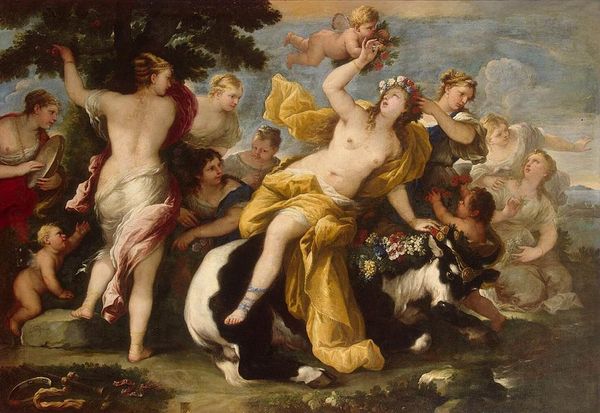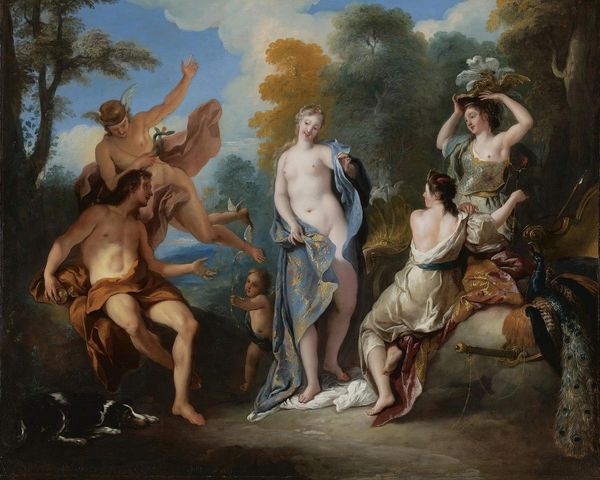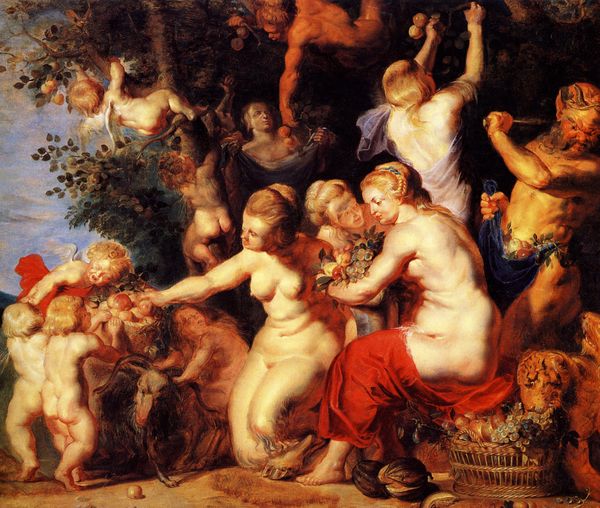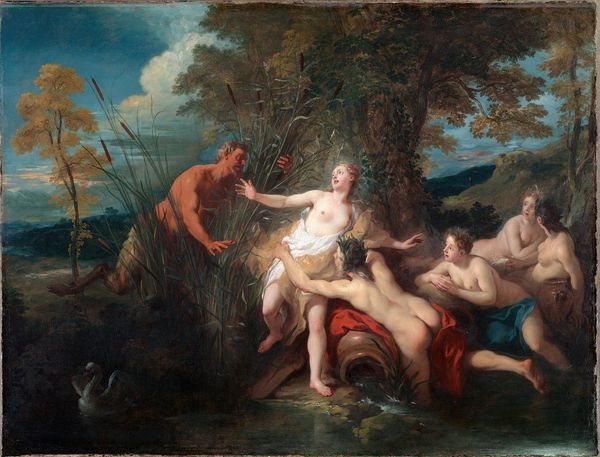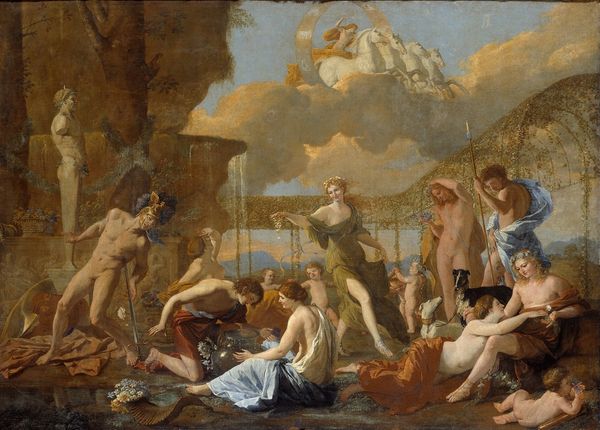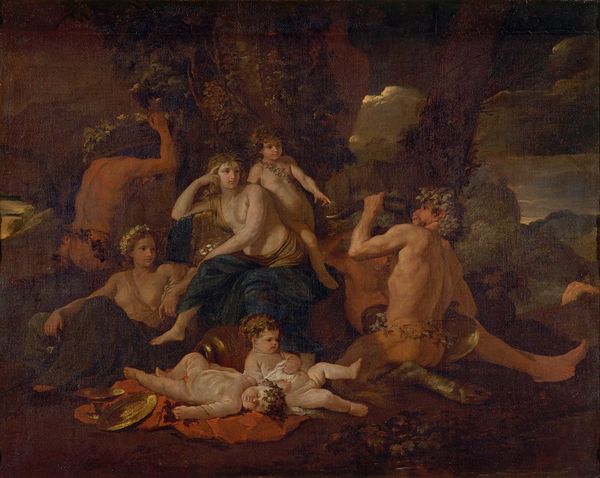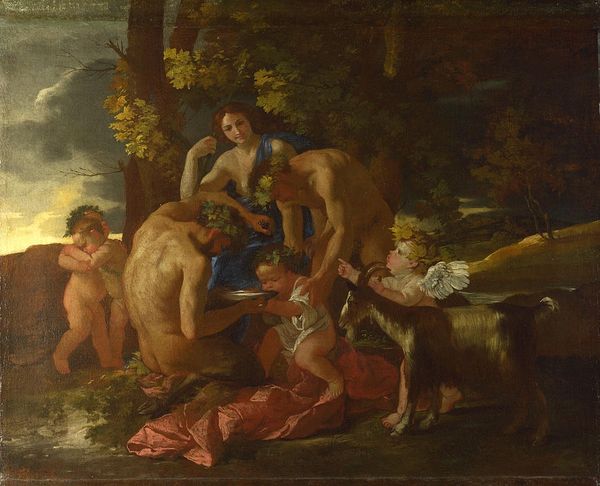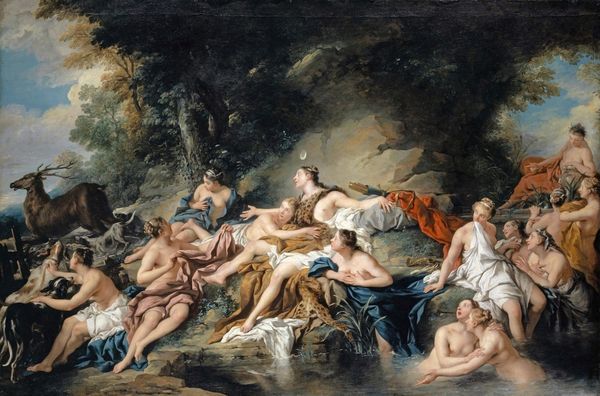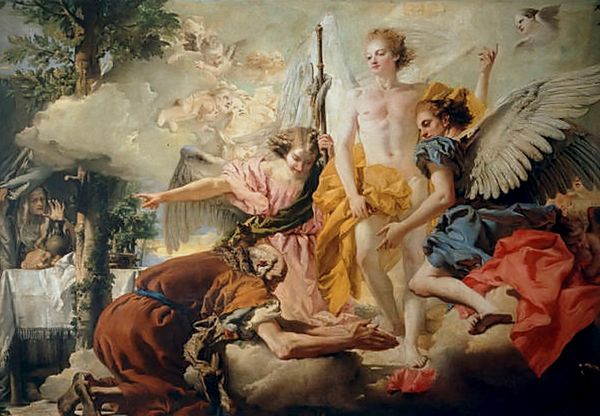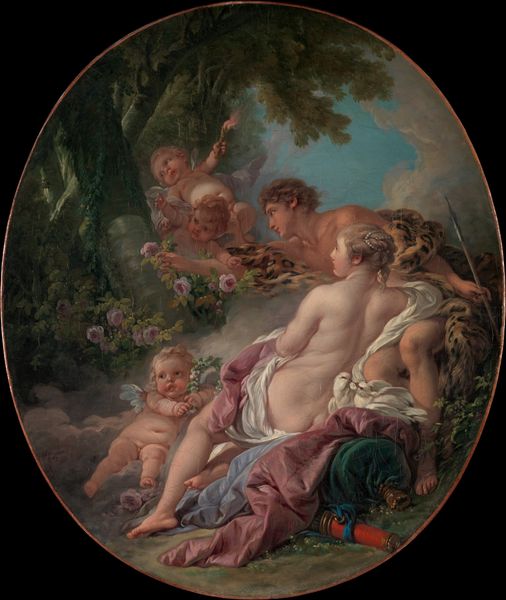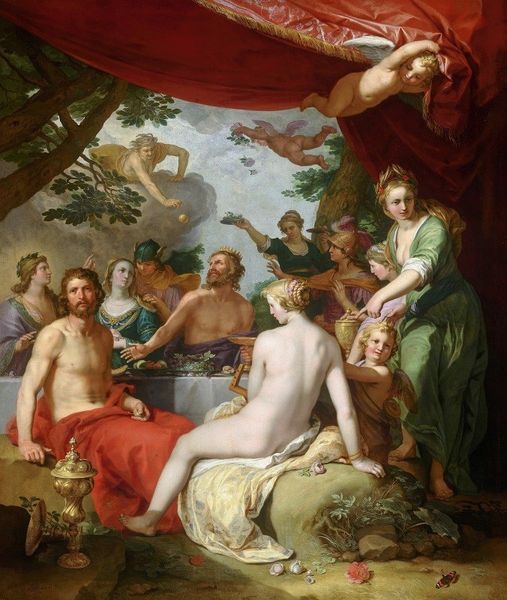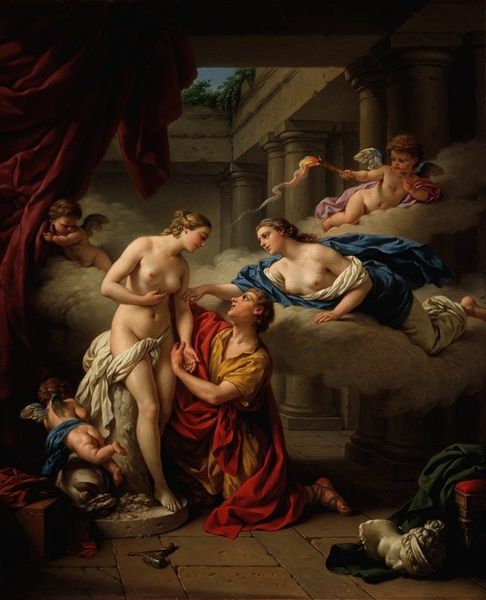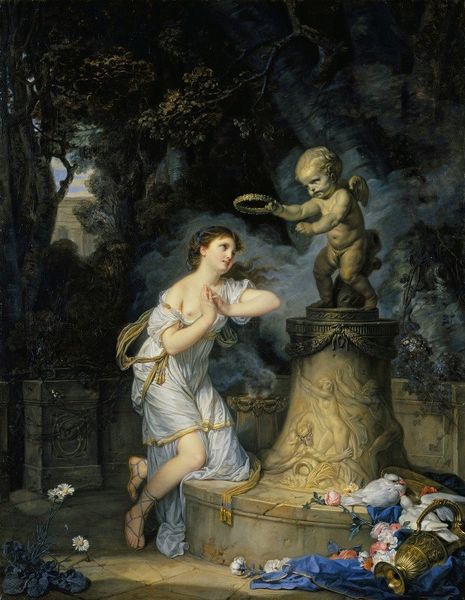
oil-paint
#
allegory
#
baroque
#
oil-paint
#
landscape
#
figuration
#
oil painting
#
underpainting
#
painterly
#
mythology
#
history-painting
#
academic-art
#
nude
Copyright: Public Domain: Artvee
Gerard de Lairesse painted “Nymphs and Bacchantes Paying Homage at the Temple of Flora” sometime between 1641 and 1711. The painting invites us into a scene of classical leisure, typical of the Dutch Golden Age, where the concerns of commerce gave way to the pleasures of art and philosophy. At first glance, the painting presents an idealized vision, yet we might consider how it reflects the complex social dynamics of its time. Representations of nude women, common in classical themes, often served to reinforce ideas about beauty, desire, and power. The nymphs and bacchantes, figures of myth, allowed Lairesse to explore themes of sensuality. The temple of Flora, goddess of flowers, represents a reverence for nature, yet it also subtly hints at the controlled and cultivated landscapes favored by the wealthy elite. Lairesse’s work encourages us to consider how art and beauty are intertwined with the cultural values and social structures of the time.
Comments
No comments
Be the first to comment and join the conversation on the ultimate creative platform.
